Seismic Field Trip 2019 - MSc Earthquake Eng. with Disaster Management
10 July 2019
As part of MSc EEDM programme, our students benefit from a week-long field trip to a recent major earthquake to observe the extent of the destruction and the latest structural restoration and strengthening techniques. This year we visited Italy.
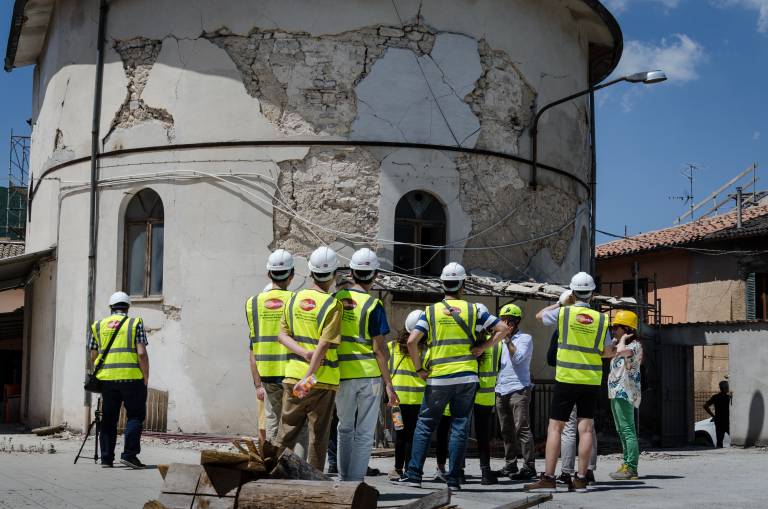
The August 2016 (Mw 6.2 / Violent Intensity) & January 2017 (Mw 5.7 / Severe Intensity) central Italy earthquakes left more than 330 casualties and 4'500 people homeless, who needed immediate relocation, shelter and basic living needs. The following is a short report on educational and technical activities conducted by UCL MSc EEDM students, as part of their visit in July 2019.
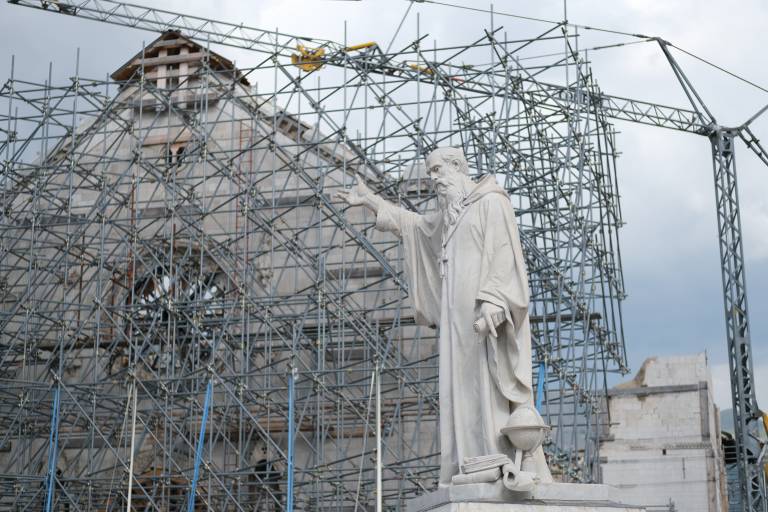
Day 1
we visited the Civil Protection Headquarters in Foligno, a base isolated building where the monitoring & decisions are made during disasters in the Umbria and neighboring regions.
First hand experience for our MSc students to see how response of Aug. 2016 and Jan. 2017 central Italy earthquakes were coordinated.
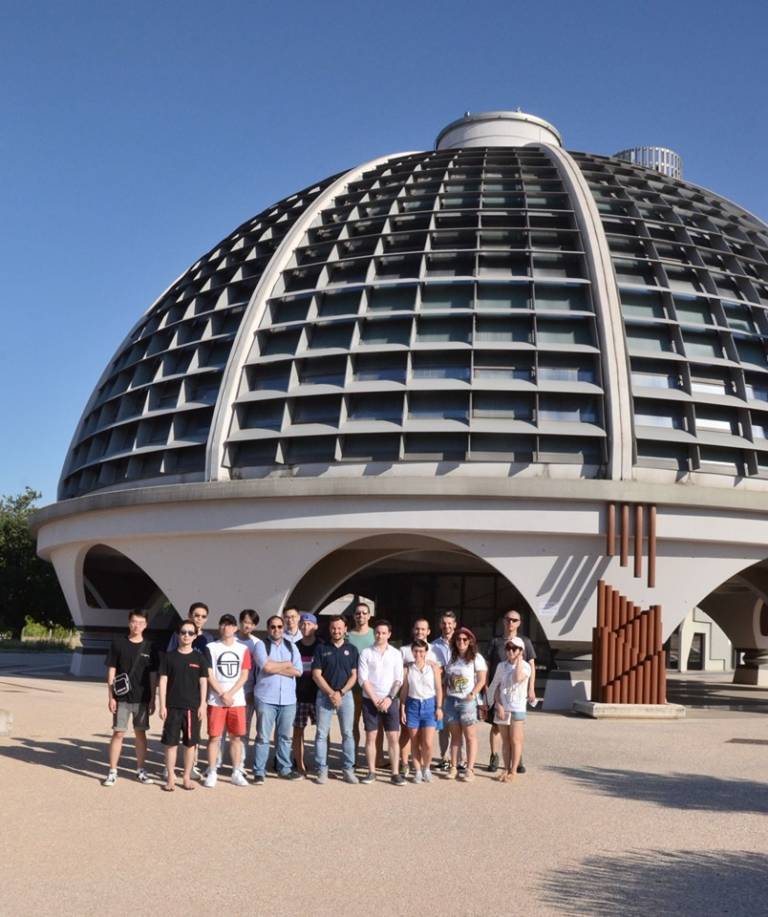
Italy Civil Protection Engineers shared their own experience in different aspects of immediate disaster management & response as well as preparedness, planning and prevention for various natural hazards. Students visited the equipment and facilities stored and ready for quick deployment in case of any emergency.
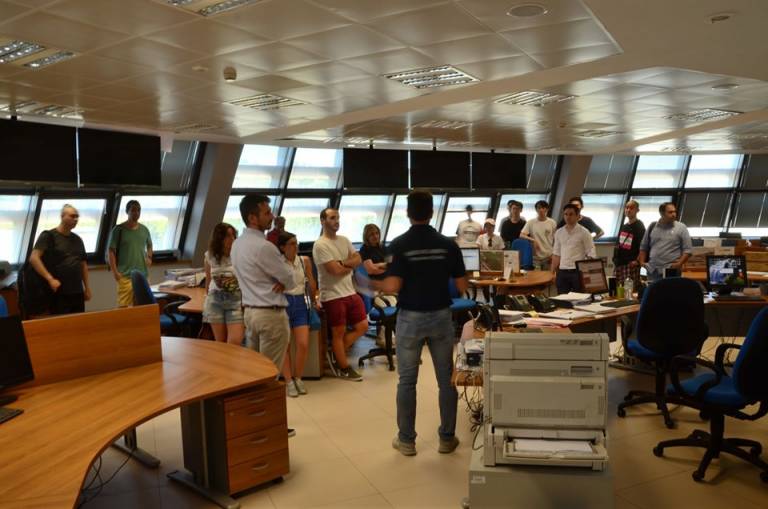
Day 2
we visit the ongoing reconstruction activities & temporary housing after 2016 & 2017 central Italy earthquake in Norcia & Castelluccio, as well as the ICRS depot in Spoleto for restoration of historic & religious artefacts.
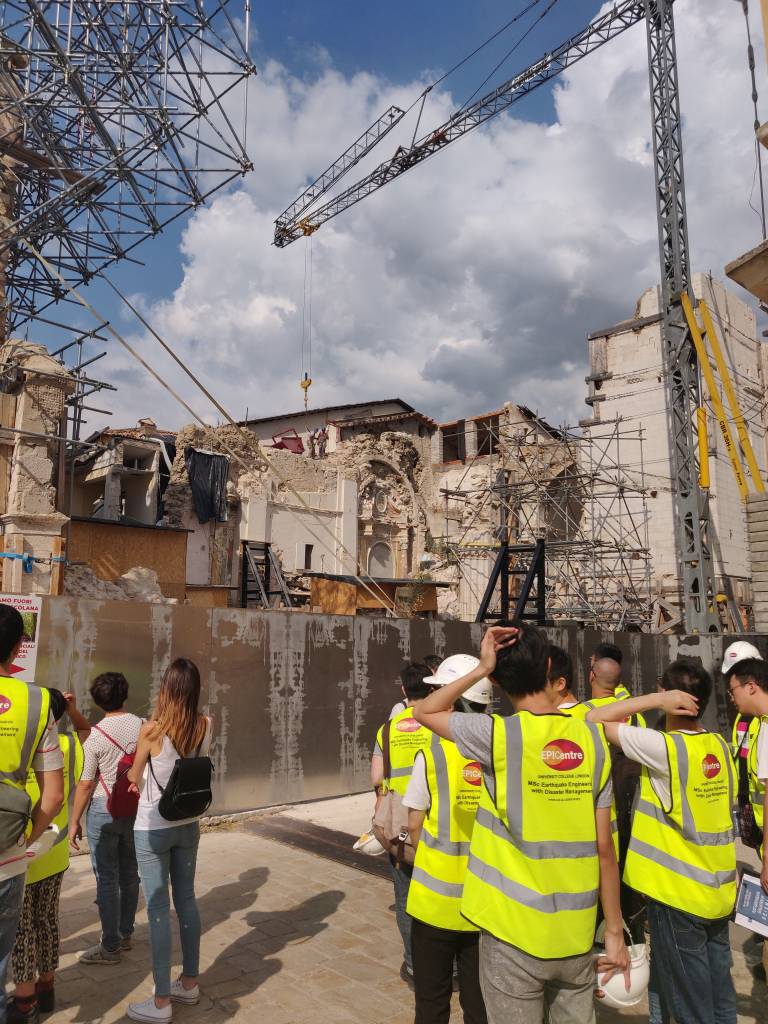
More than 2,000 officers known as the Art Squad have rescued, recovered, secured and restored more than 26,000 pieces of art damaged after the earthquake. This includes churches, statues, books, libraries, archives, artefacts and much more. Moreover, students observed and discussed the critical features that an engineer should consider while designing temporary & permanent housing after any disaster. Aspects such as portability, speed & cost of construction, requirements of the users, ease of assembly & removal, challenges in supplying power, water & sewage systems, as well as the sustainability & environmental considerations were pointed out by experts of the field.
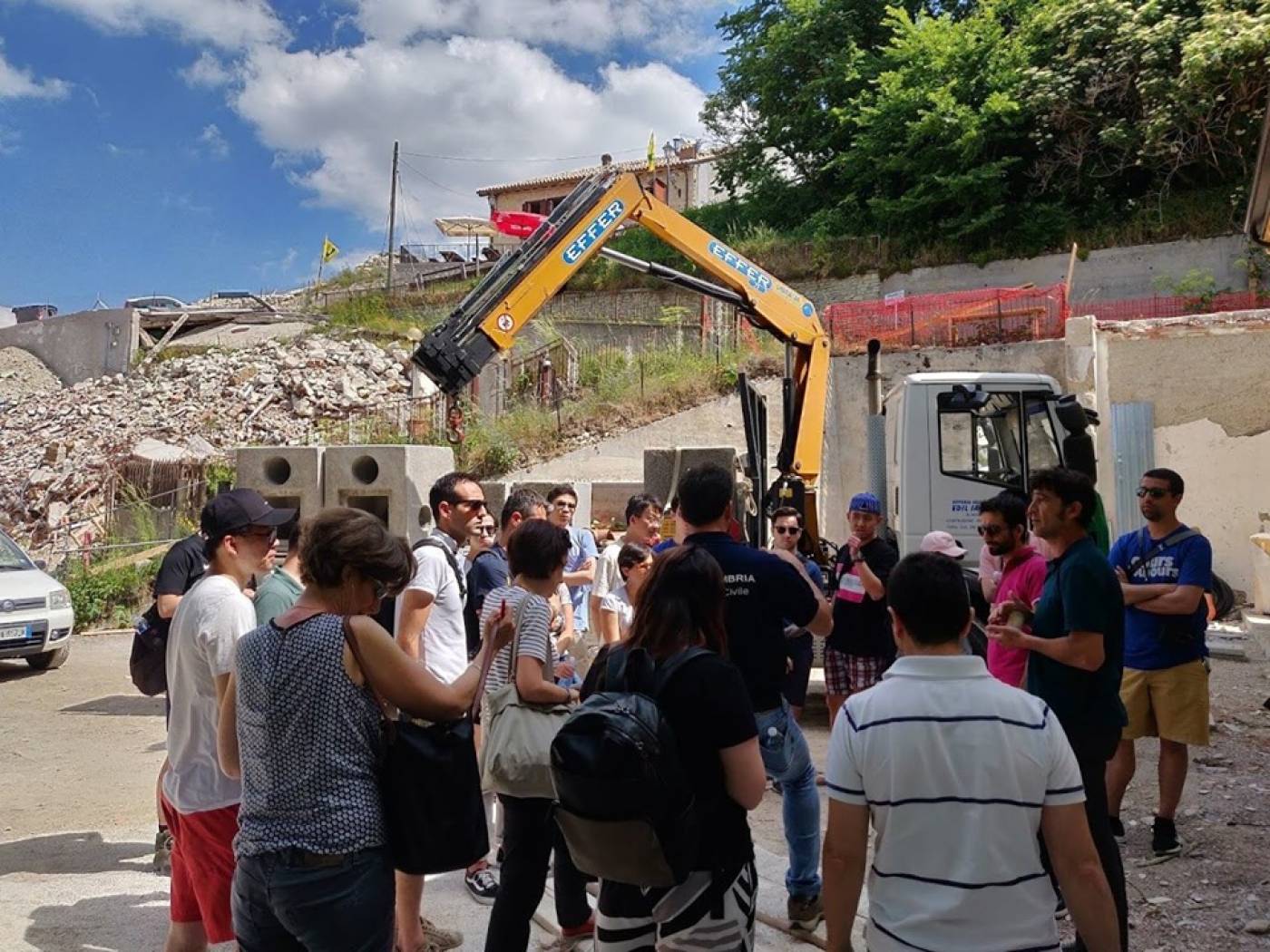
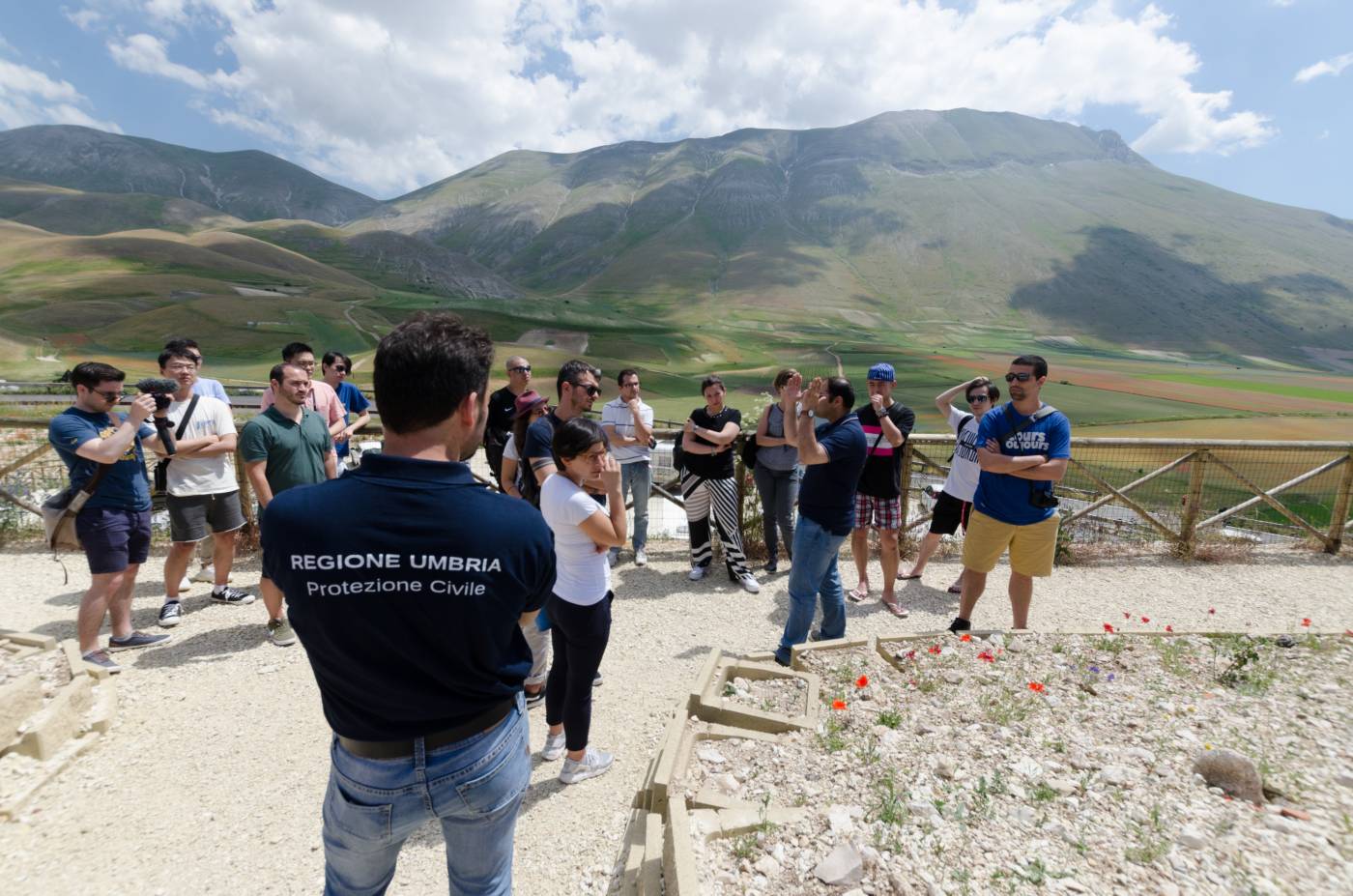
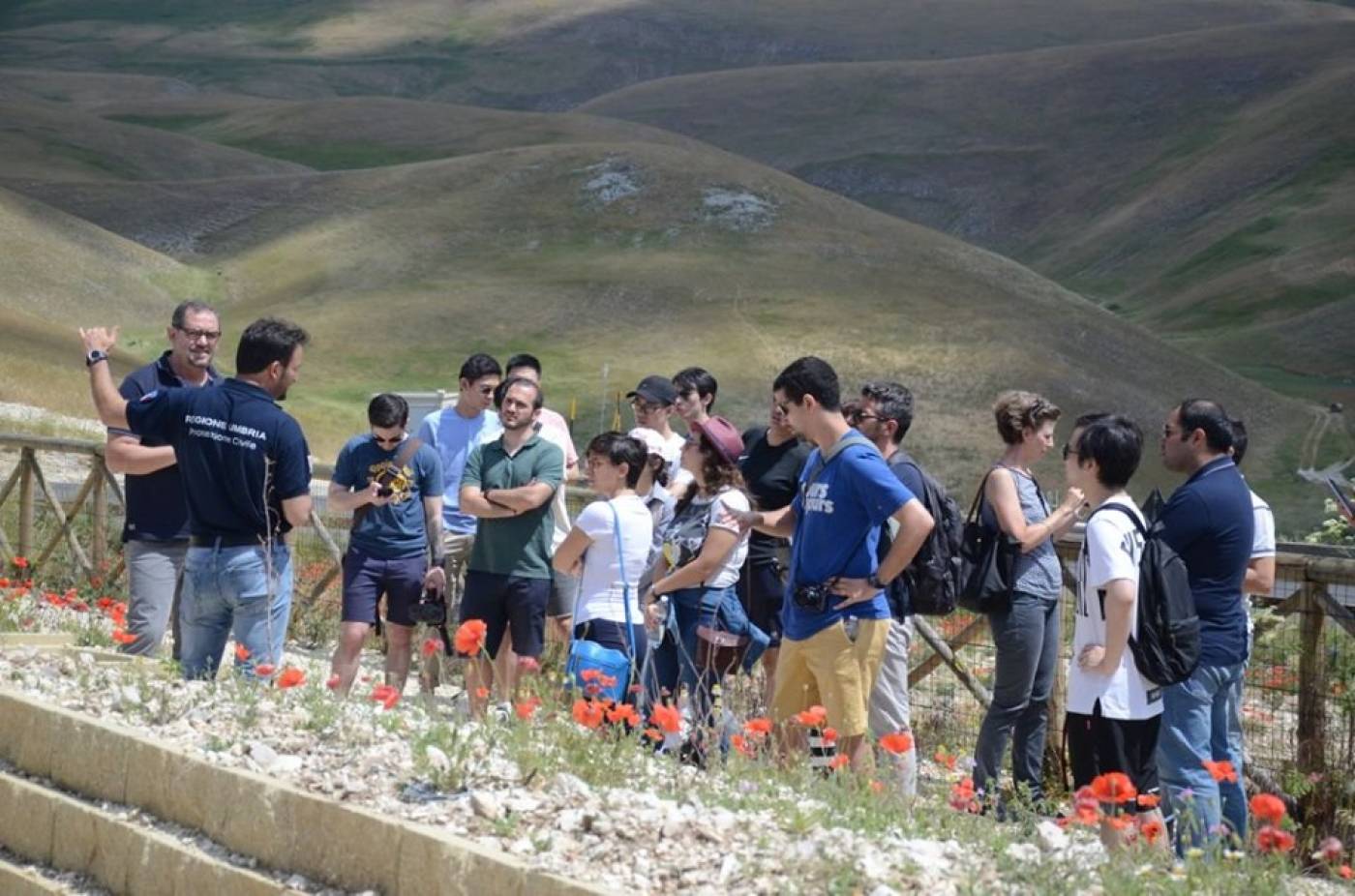
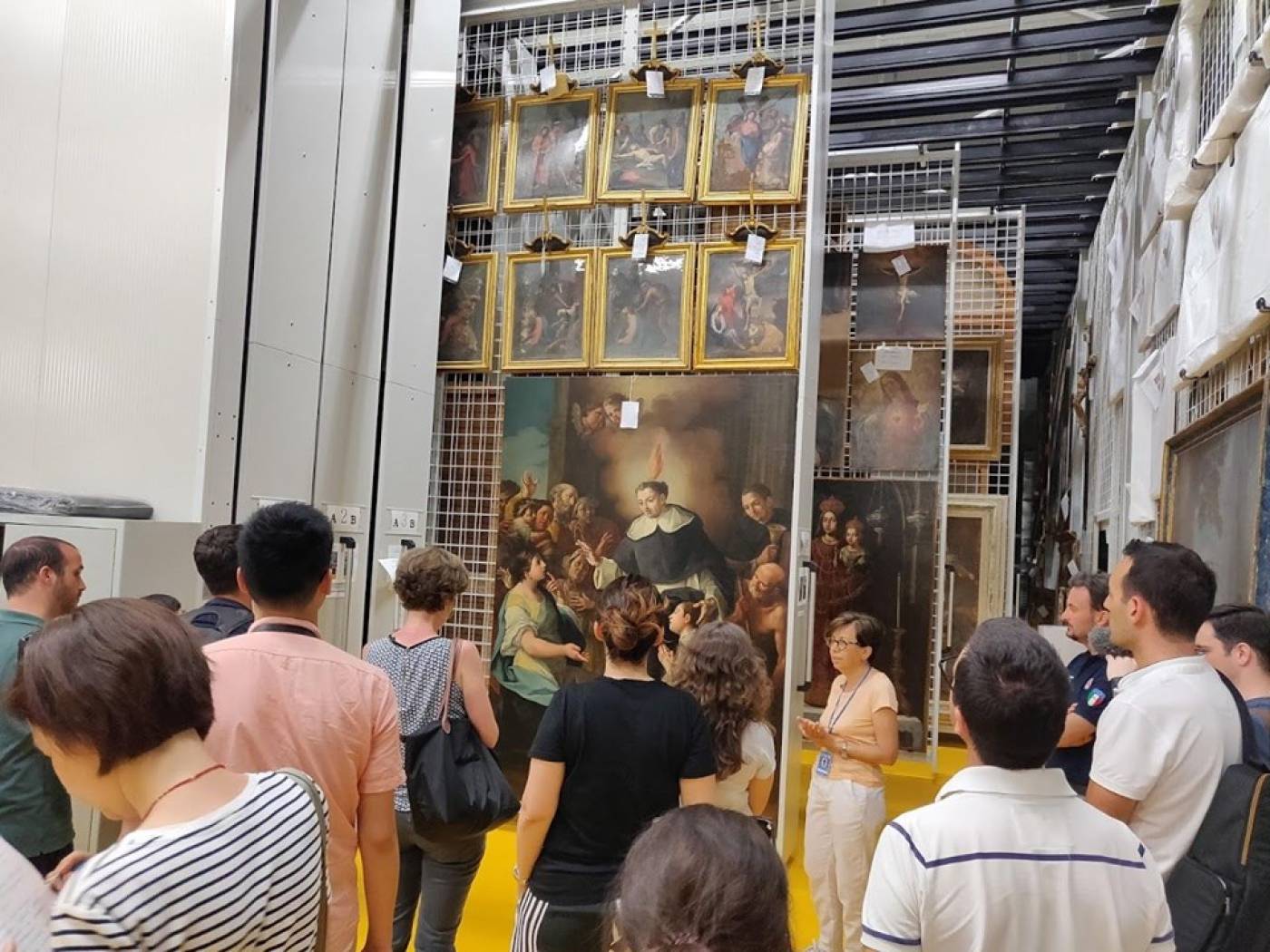

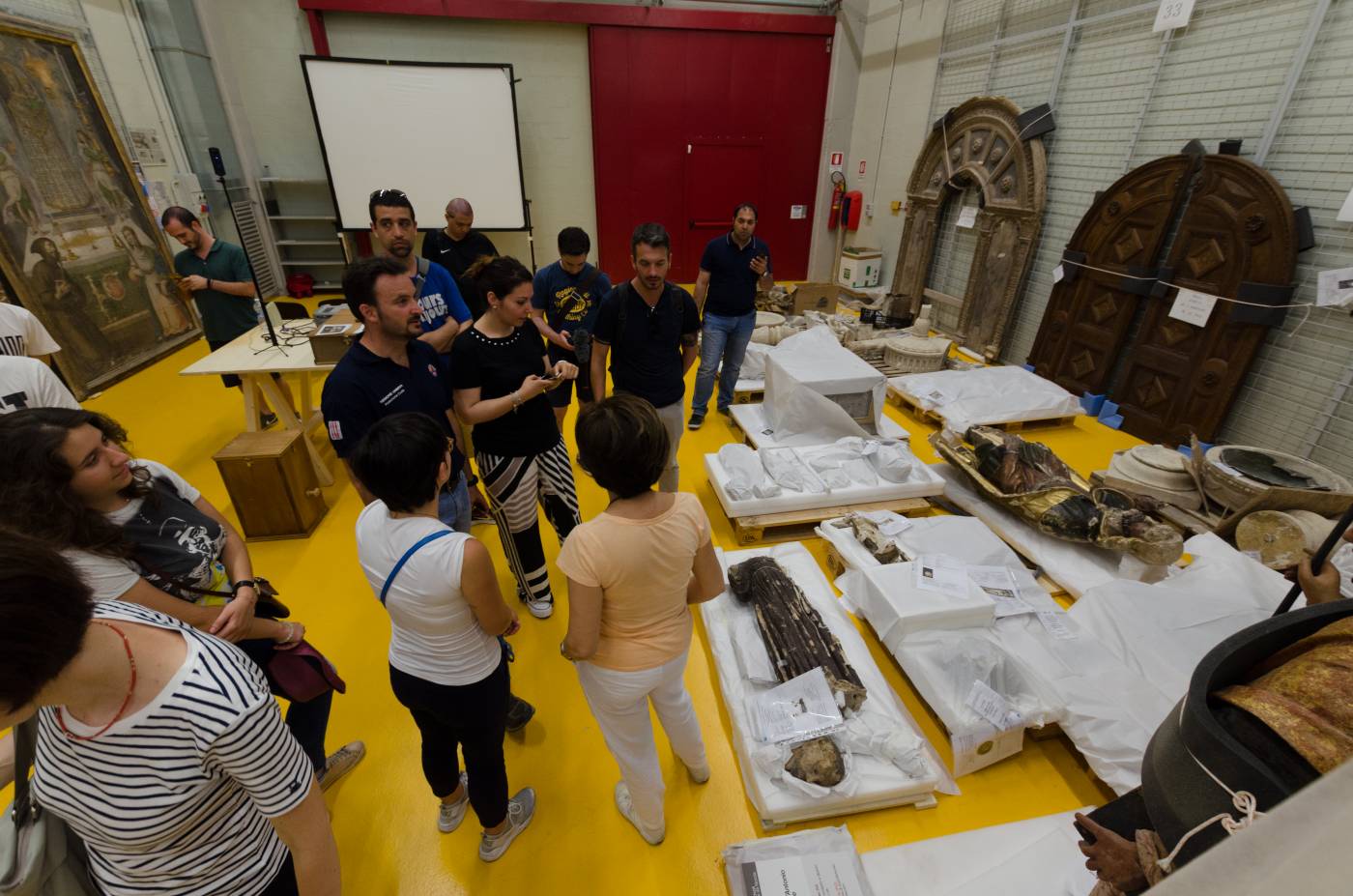

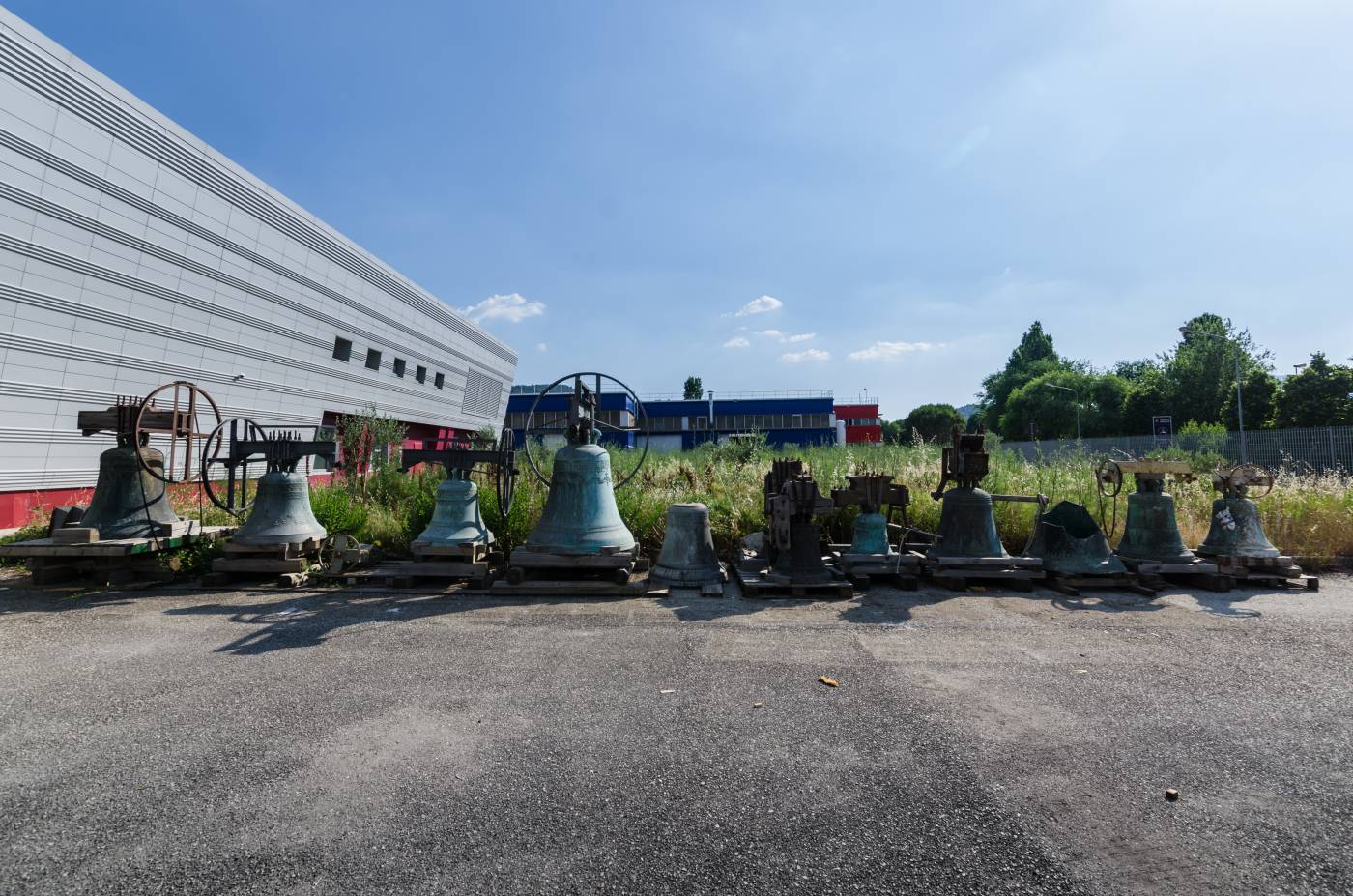
Day 3
we visited damaged and restored Masonry & Reinforced Concrete structures after central Italy earthquake. Students learned how to collect post disaster data using our in-house EEFIT mobile app.
Great opportunity for our students to see & feel various types of structural deficiencies & shortcomings discussed during the MSc courses. Deficiencies such as short column, strong beam – weak column, pounding, irregularities in stiffness, weight, plan and height, as well as shortcomings in material properties and construction approaches.
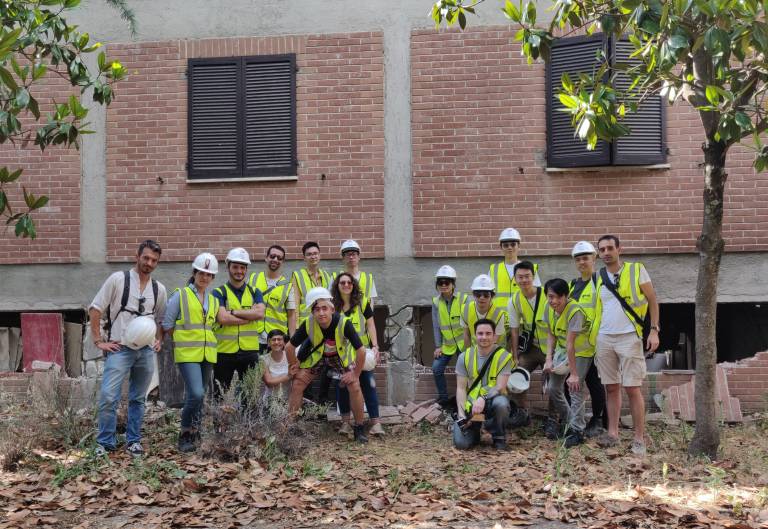
Students appreciated the value of retrofitting and mitigation of critical infrastructures such as schools and hospitals, and how simple measures can save human life and capital. First hand experience with innovative methods of restoration and safe guarding structures.
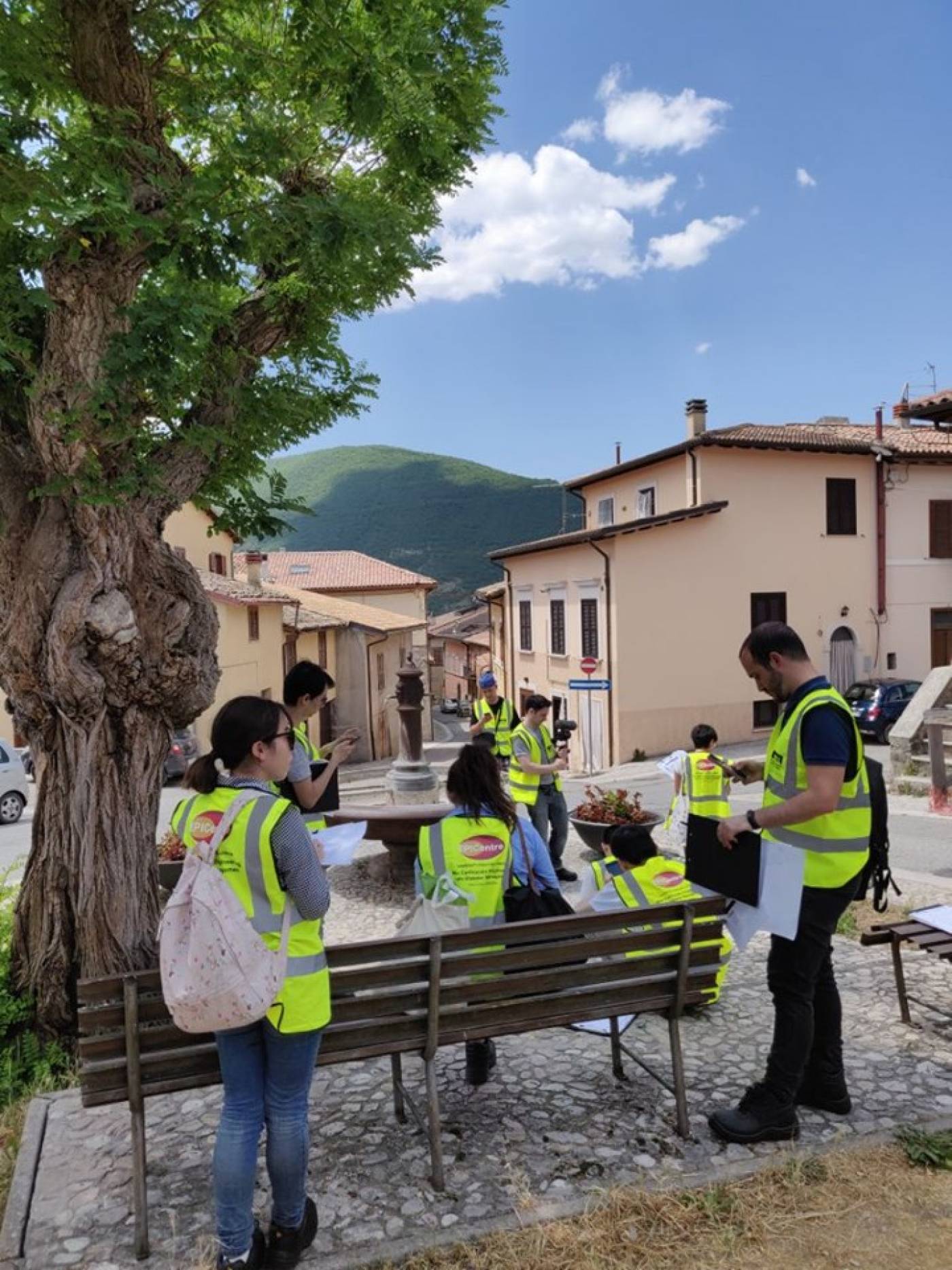

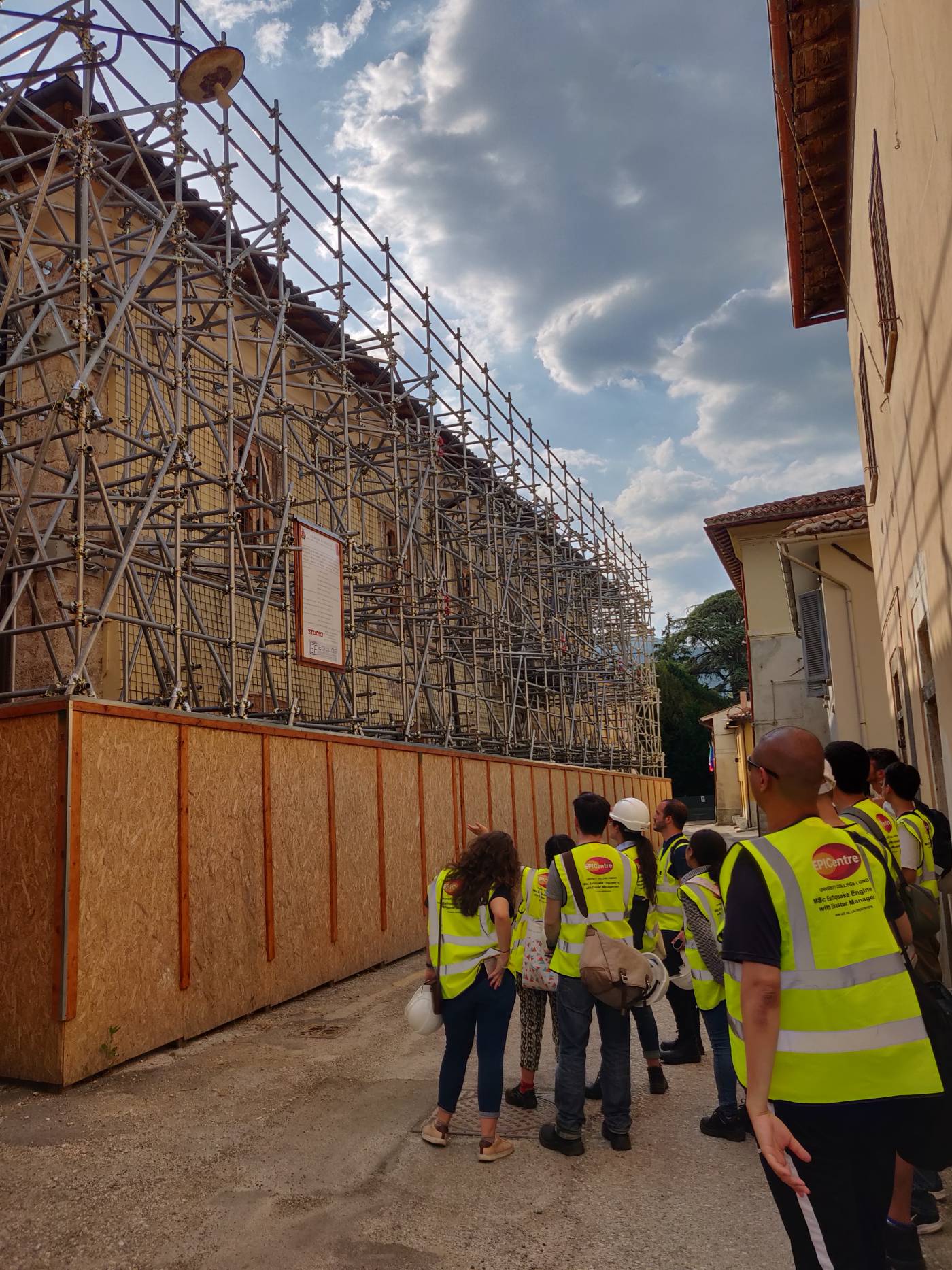
Day 4
We visited damaged houses and churches in Norcia, Campi & Todiano, observing the extent of damage. Students saw the preservation, restoration and mitigation process as it was taking place.



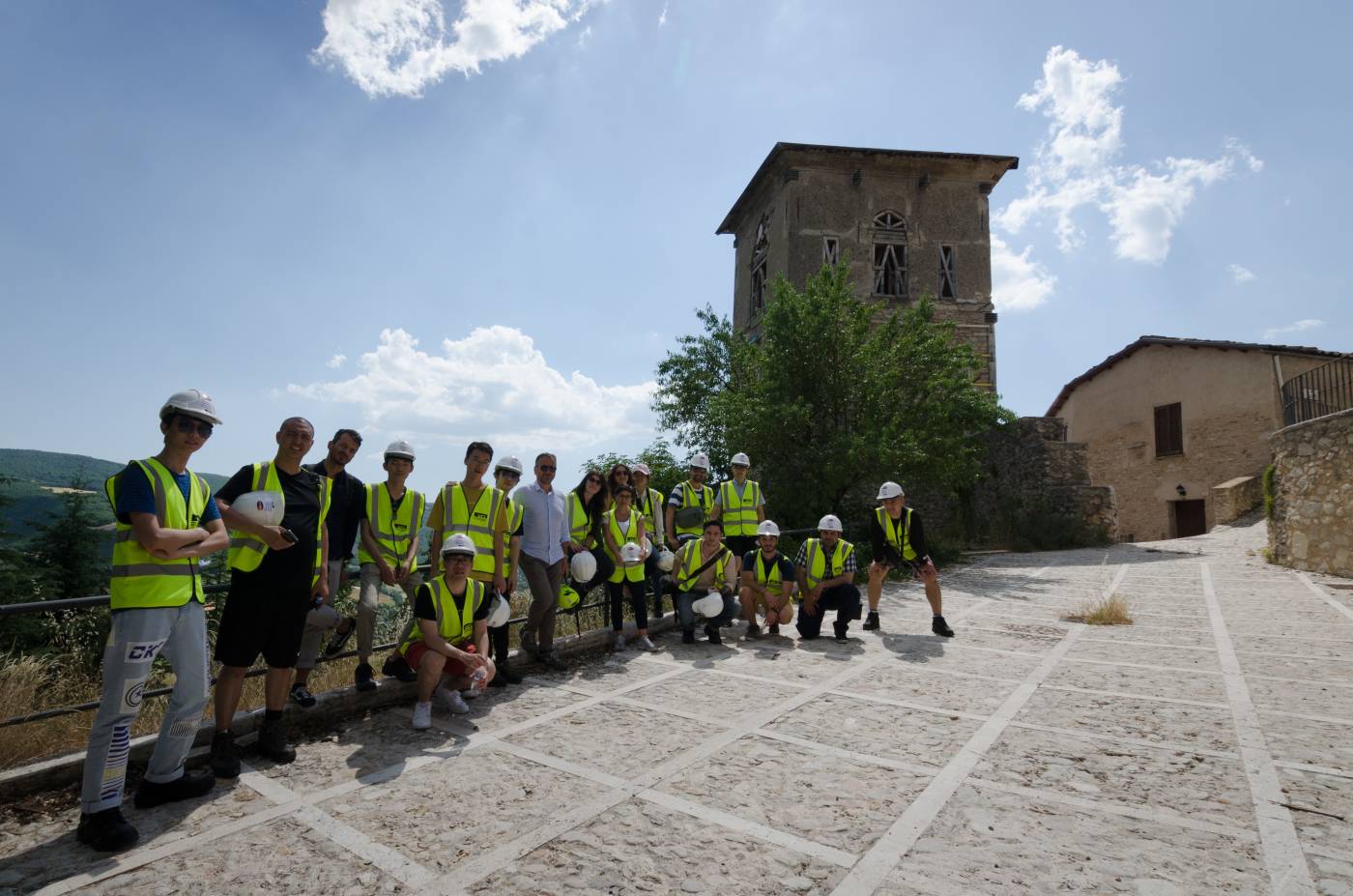
Students visited Chiesa di Sant'Andrea and Madonna di Piazza in Campi, both suffered from heavy damage after October 2016 earthquake. The structures had already been weakened by the earthquake in August 2016.
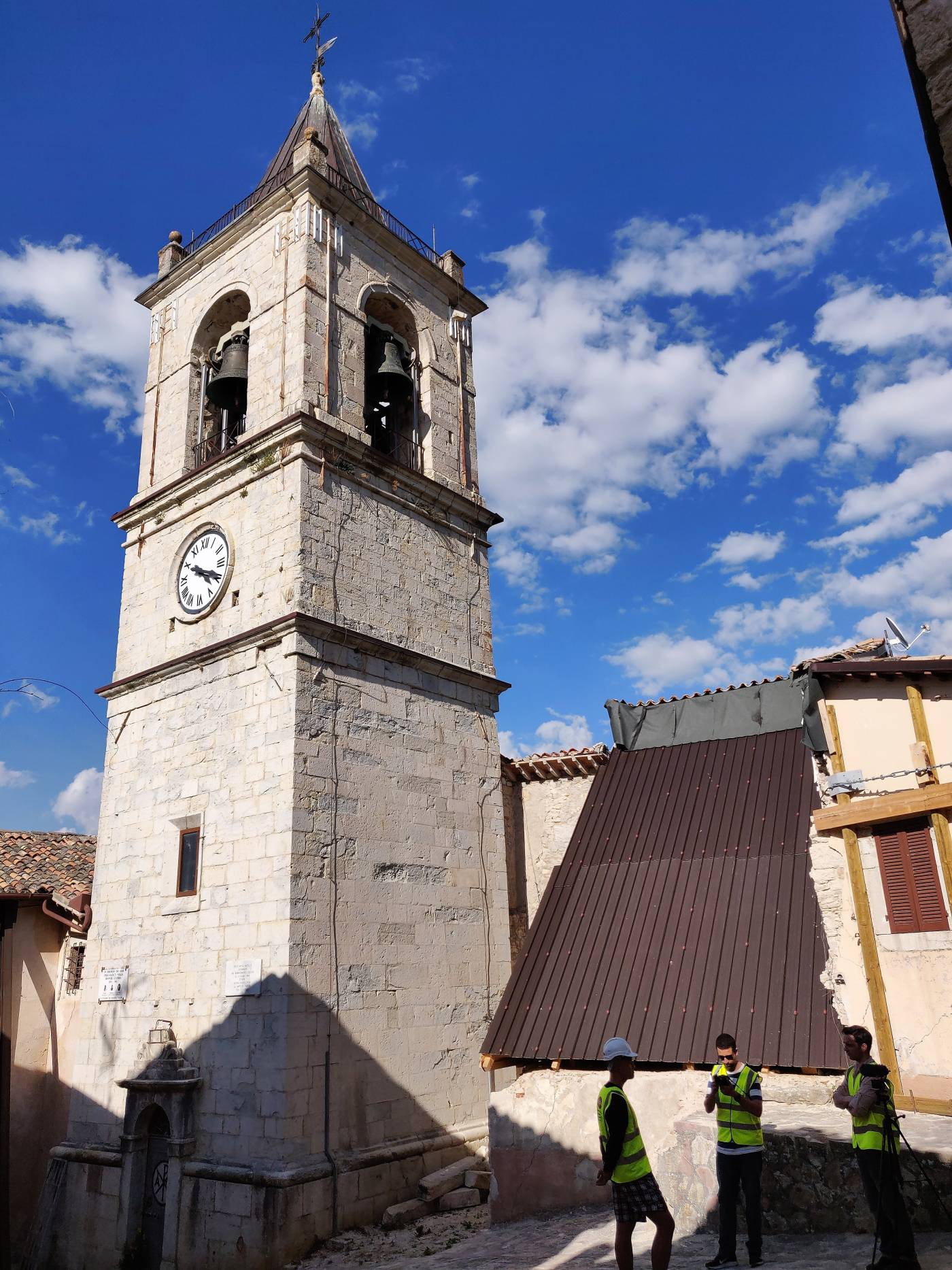
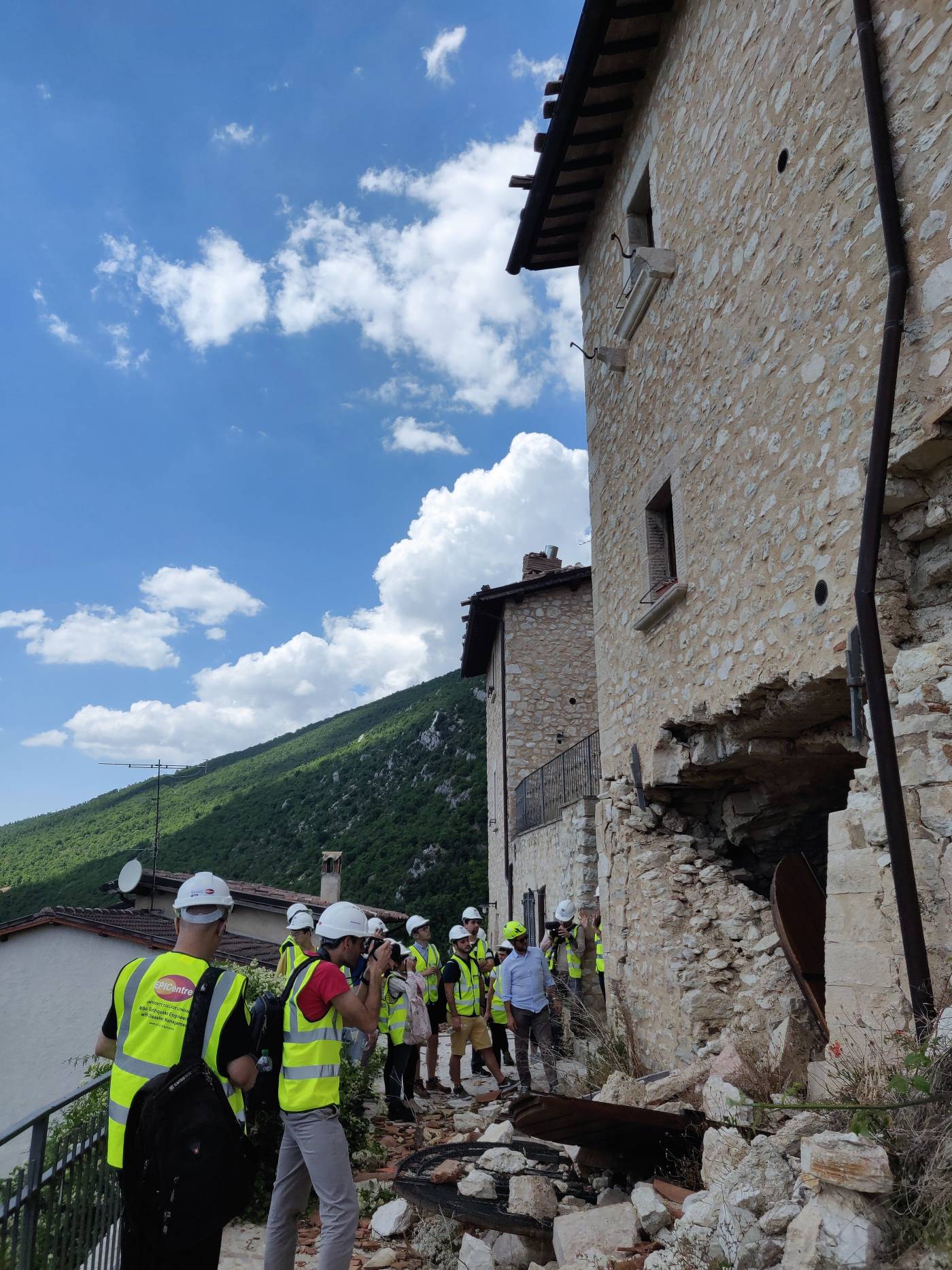

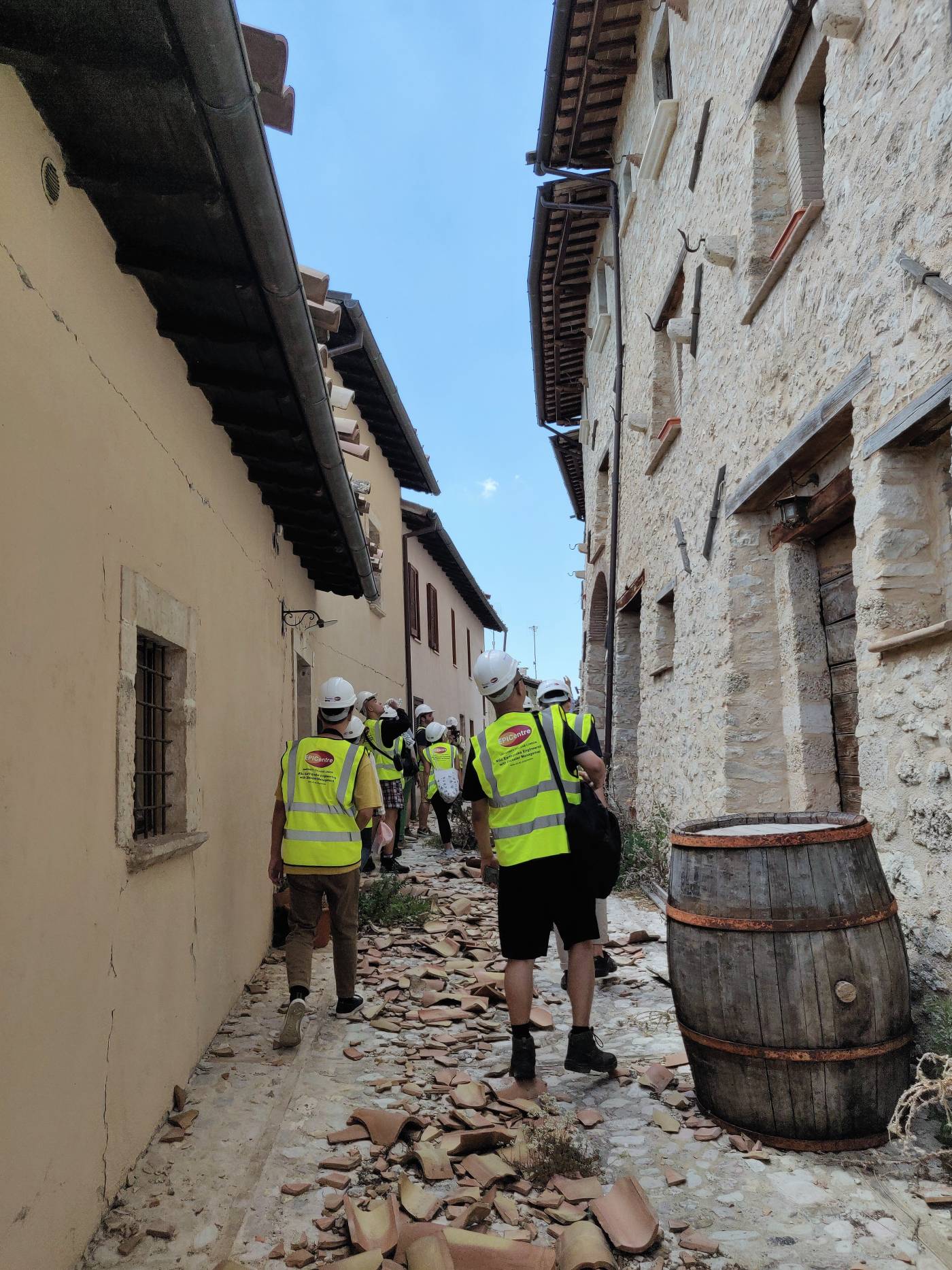
The above field trip activities are an opportunity for out MSc students to review the knowledge they gained during the lectures, coursework and scenarios discussed in the following core and optional modules of MSc Earthquake Eng. with Disaster Management:
- Introduction to Seismic Design of Structures (CEGE0032) (Core)
- Seismic Risk Assessment (CEGE0033) (Core)
- Geotechnical Earthquake Engineering (CEGE0035) (Core)
- Structural Vulnerability and Resilience (CEGE0051) (Core)
- Advanced Seismic Design of Structures (CEGE0061) (Core)
- Integrating Science Into Disaster Risk Reduction (IRDR0015) (Optional)
- Natural and Environmental Disasters (CEGE0036) (Optional)
- Earthquake Siesmology & Earthquake Hazard (GEOL0042) (Optional)
- Catastrophe Risk Modelling (IRDR0008) (Optional)
Find out more on UCL MSc Earthquake Eng. with Disaster Management
Links
- EPICentre
- EPICentre Courses
- EPICentre 360 Library
- MSc Earthquake Engineering with Disaster Management
- UCL Civil, Environmental and Geomatic Engineering
Image
- Credit: Arash Nassirpour, Athanasios Pappas, Matthias Fuentes
 Close
Close

